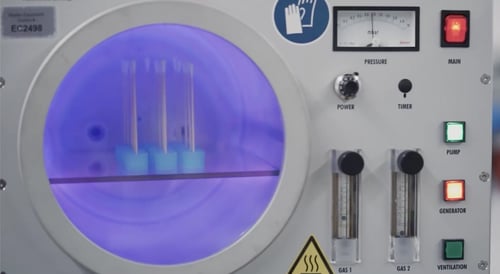
In short: Plasma is a change in the state of matter under energy supply: solid ⇒ liquid ⇒ gaseous ⇒ plasma
If energy is continuously supplied to a material, its temperature rises and it changes from the solid to the liquid to the gaseous state. If the energy supply continues, the existing atomic shell is broken up and charged particles (negatively charged electrons and positively charged ions) are formed. This mixture is called plasma or the "fourth state of matter".
In short: Plasma is a change in the state of matter under energy supply:
solid ⇒ liquid ⇒ gaseous ⇒ plasma
In nature, plasma comes in lightning, polar lights, flames and the sun. Artificially created plasmas are known, among other things, from the neon tube, from welding and from flashlights.
Plasma is used in areas where it is important to connect materials or to change their surface properties in a targeted manner. A wide variety of surfaces can be modified with this forward-looking technology. There are therefore many possible applications:
Plasma technology has now established itself in almost all industrial areas. New applications are constantly being added.
To learn more about the use of plasma in manufacturing, please read our eBook titled "Manufacturer’s Surface Activation Guide for Improved Adhesion."